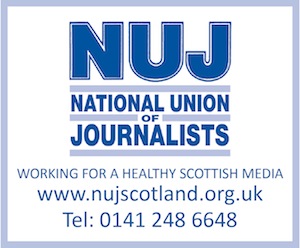NOTHING brought home to me more the variety, potential and opportunity of the Scottish newspaper industry than when I attended my first council meeting of the Scottish Newspaper Society.
Around the table were representatives of the full range of membership, from the managing director of the Daily Mail, the biggest newspaper in Europe (by turnover) and publisher of the world’s most popular newspaper website, to the publisher of the Strathearn Herald. It is estimated 80 per cent of Scots read an average issue of one or more of the 133 newspapers that circulate across the country.
Worldwide, figures say that 1.9billion people have access to the internet, 0.6billion to broadband, 5.5billion own a mobile and 1.2billion have access to 3G services. And 3.7billion watch television. But still comparing favourably are newspapers, with an estimated global daily readership of over 2billion and a weekly readership of 3.2billion.
Despite decades of pressure, initially from broadcast and more recently digital media, newspapers continue to be the main force in terms of communicating fact. And today we are increasingly the most interactive of traditional media and the catalyst for social change. Nowhere is this the case more than in Scotland.
The roles of the Scottish Newspaper Society are two-fold. The first is to promote the value of newspapers as the communication medium, a vital part of democracy, a debating forum and force for change. The second is to promote the interests of the industry, its titles, editors and publishers and ensure we play a full role in the evolution of Scottish society.
So the Society’s role is to maximise interaction and participation among the widest range of stakeholders in Scotland, not just publishers and editors, but – as importantly – business people, politicians and others in the public sector who are all members of the wider news media.
Then of course there is the general public who we must encourage to read more often. The challenge of all traditional media is that audiences remain high overall, but levels of engagement – frequency and intensity are declining. In fact, consumption of news on broadcast has been falling faster and for longer than printed news.
Two issues are currently leading the SNS agenda. The first is anticipating and influencing the likely future of Scottish media regulation, particularly in light of the Leveson Inquiry into press standards and also the impending referendum on Scotland’s constitutional future. Should Scotland have its own media regulatory framework? What are the implications for cross-media ownership? Should there be a Scottish Broadcasting Corporation? And what about the forthcoming franchise bid for the Channel 3 patch currently occupied by STV?
The second relates to public access to public notices, in the form of advance warning re planning permission, changes in local government policy, changes to road layouts, etc. Local authorities are obliged to place such public notices in their local newspapers, but there are pressures to free them of this obligation. Two years ago, MSPs made it clear – during a debate in the Scottish Parliament – that they would resist a Scottish Government proposal that would allow local authorities to place their notices only on their own websites, thus saving money. Back then, the prospect of defeat in a vote saw the Scottish Government back off.
But the issue remains very much alive, even though it is estimated that public notices are found in newspapers by 34 per cent of the population, as against one per cent on a website.
It might cost more to place a notice in a local newspaper, but it is infinitesimal compared with the loss of the public’s right to know and participate in the democratic process.
This, of course, also falls into the Society’s second role, namely promoting the interests of the industry. Here, the Society can and will take a greater lead in promoting the newspaper medium to advertisers. The Society will encourage greater interaction between editors and public figures.
Communication with stakeholders under the excellent guidance of my predecessor, Jim Raeburn, is already strong, but my task is take this to a higher level. And the time to deliver this starts now. If you have any views about the Society and how its members can add value to Scotland and to your own activities, contact me today.
My email can be linked to here. My mobile is 07775 817797.
Jim Chisholm is the newly-appointed director of the Scottish Newspaper Society. He was previously a newspaper consultant and analyst.





